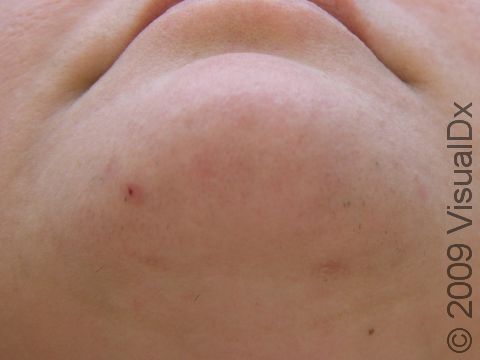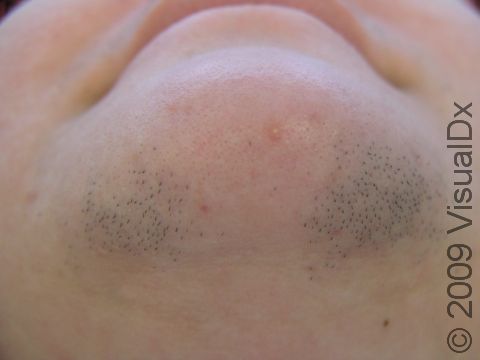Hair Removal, Laser
With just the right type of laser or Intense Pulsed Light (IPL) technology, suitable hairs can be superheated and permanently removed. The target of the light is the pigment in the hair. The ideal candidate is a patient with light skin and dark, coarse hair. With the latest technology, all skin types can be treated; however, more treatments may be required for patients with darker skin. Removing hairs that are white, gray, blond, or that are fine is a challenge.
Who's At Risk?
Success is determined by multiple variables. A good candidate treated by an experienced doctor or highly skilled technician using the best technology is nearly always successfully treated. A poor candidate treated by an inexperienced, minimally trained, unsupervised technician with suboptimal technology is likely to fail.
Signs & Symptoms
Preparation for the treatment should include the following:
- Avoid tanning and wear sunblock and protective clothing.
- Do not remove the root of the hair for 1 month before treatment. (No plucking, no waxing, and no threading.)
- Patients can shave, bleach, trim, or use a depilatory.
- Use numbing cream for 30–90 minutes before treatment, if directed.
Before treatment, appropriate eye protection will be worn by both the laser surgeon and the patient. The skin is cleaned, and the hairs in the area to be treated are shaven. The laser handpiece is then placed over the area to be treated, and a pulse of light is emitted. Each pulse is approximately the size of a coin. Laser treatment is usually fairly quick for a small area but may require an hour or more for large areas, such as the legs. Some compare the pain of the laser treatment to a superheated needle briefly entering the skin.
After treatment, the skin is red and temporarily swollen around the follicle and red for 1–3 days.
Self-Care Guidelines
Gentle skin care and sun protection are both important to promote proper healing. Gentle skin care involves avoiding potentially irritating skin products (eg, glycolic acid, alcohol) as well as excessive scrubbing or rubbing. Using a moisturizing sunblock following the procedure serves a dual role of preventing sun-induced darkening of the skin (hyperpigmentation) and soothing irritated skin after laser hair removal.
Treatments
The only alternative approach to permanently removing hair is electrolysis. Temporary removal of hair can be accomplished with, razors, depilatories, waxing, threading, and plucking. Bleaching can be helpful in minimizing the appearance of the hair on the skin. A cream containing eflornithine (Vaniqa®) can serve to slow the rate of hair growth.
Visit Urgency
- Lack of results
- Stimulation of new hair growth (extremely rare)
- Blistering
- Darker- or lighter-colored skin
- Scarring
Last modified on February 10th, 2023 at 7:00 pm

Not sure what to look for?
Try our new Rash and Skin Condition Finder

